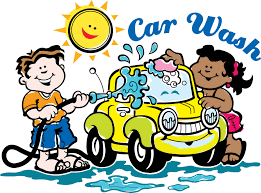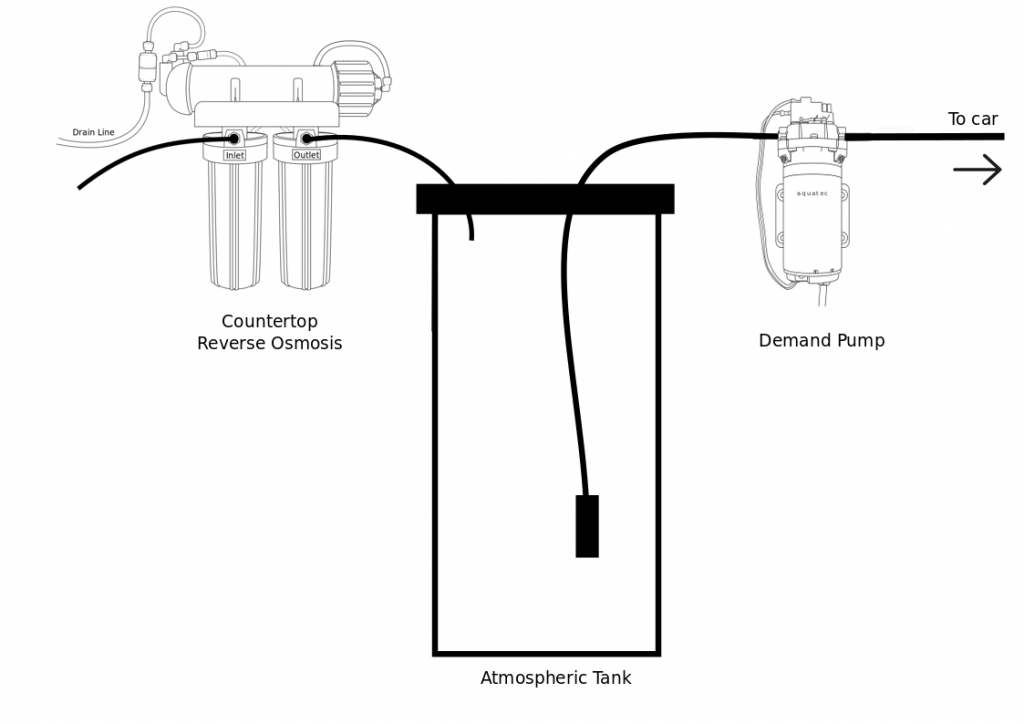Washing Cars
Car wash products have never been our favorites.
We believe that the best place to wash a car isn’t at home but in a professional car wash establishment. Commercial car wash locations are set up to furnish water for spot free rinses at a reasonable cost, to recycle water, and to get rid of the wastewater in a much more environmentally friendly way than you can at your home. At home, the soap, chemicals, and wastewater end up in the worst place you could put them–in the storm drain.
Nevertheless, home car washing is extremely popular, and there are probably worse things people could do with their time than washing their cars.
We sell a garden hose filter with a softening cartridge that has been very popular. It isn’t perfect, but if you use it according to instructions it will do a fair job of knocking down the hardness minerals (calcium and magnesium) that cause spots on cars. This helps in many cases but in others not so much, because the softening process (whether it’s done by our tiny cartridge or by a full-fledged home water softener) doesn’t always solve the problem. Softening removes the hardness (calcium and magnesium) from the water, but it adds an equal amount of sodium, which also can cause spotting. So, washing with softened water helps, but you often still have to wipe away the spots caused by the sodium.
The only way to get a real spot free wash is with low mineral water and the only practical ways to produce this are with deionization (DI) or reverse osmosis (RO), or with a combination of the two.
Softening “exchanges” ions–salt for calcium and magnesium–but DI removes all of the minerals. DI makes water that’s perfect for a spot-free car wash, but it has the drawback of being very expensive. Softener resin can be regenerated at home, but DI resin can’t, and it doesn’t last long. The small garden hose car wash “filters” that come and go (Mr. Clean, for example) are DI units. They work well, but cost is so high that it would almost make more sense to trade in your car for a new one when it gets dirty. There are lots of larger refillable DI home car wash units on the internet now that allow you to buy resin in bulk to cut the cost. Buying in bulk is better than buying small individual cartridges, but any way you do it, DI costs a lot and continually changing the resin is no fun.
Reverse Osmosis removes about 95% of the minerals in water–both hardness minerals and sodium–not by exchanging but by straining them out. RO is what car wash establishments use to get “spot free” water, and it is the most economical way to do it at home.
RO is a slow process, so a storage tank is needed. In the simple home RO car wash setup shown above, the small RO unit might need half a day or more to put enough water into the storage tank to wash a car. (But, what’s time to an RO unit?) The low-mineral RO water is then sprayed onto the car using the small “demand” pump. If only the final rinse is done with RO water, a small tankful of water is plenty.
Although there is an initial investment, RO is the most economical source of spot-free rinse water. The simple unit shown above, without the tank (any plastic tank, including a strong garbage can will work) costs only about $350 for the essential parts–the RO unit and the pump. Upkeep is small.
This simple system can be enhanced with items like a float shutoff to make filling automatic, larger tanks and larger pumps. The small “countertop” RO unit will make as much water as you want if you give it the time.
This simple system, of course, does not have to be used for car washing. It works well for small greenhouses, aquariums, and more–any venue in which a small amount of top quality water is needed.
RO water is a lot like rainwater, so having the system shown above is like having a rain barrel but not having to wait for it to rain.






